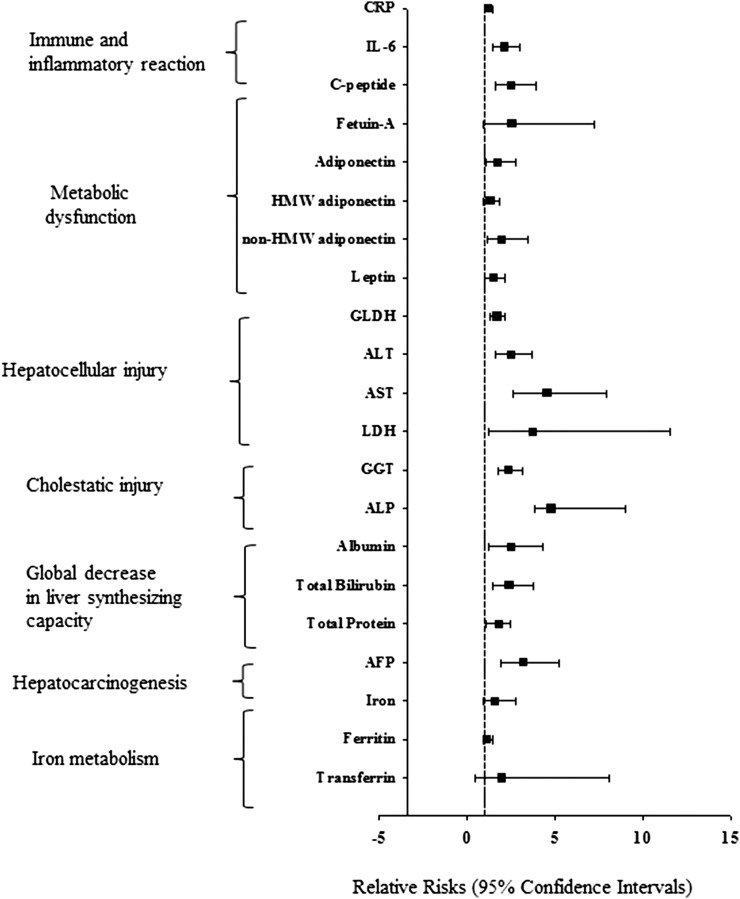FIGURE 2.
Association of individual biomarkers (log transformed) with risk of hepatocellular carcinoma in a multivariable model adjusted for coffee intake (mL/d) in the European Prospective Investigation into Cancer and Nutrition (EPIC). The multivariable model in conditional logistic regression accounted for the following matching factors: age, sex, study center, follow-up time since blood collection, time of day at blood collection, and fasting status plus adjustment for education (no school degree or primary school, technical or professional school, secondary school, university degree, or unknown), smoking status (never, past, current, or unknown), alcohol intake (mL/d; continuous), nondrinking (categorical), hepatitis B surface antigen/antibodies to hepatitis C virus infection (positive, negative, or unknown), fruit and vegetable intake (g/d; continuous), physical activity (inactive, moderately inactive, moderately active, active, or missing), diabetes (yes, no, or missing), tea intake (mL/d), BMI (in kg/m2; continuous), and waist circumference adjusted for BMI by using the residual method (cm; continuous). Women were further matched by menopausal status and phase of menstrual cycle at blood collection; postmenopausal women were matched on use of hormone replacement therapy. The associations between metabolic biomarkers and risk of hepatocellular carcinoma in EPIC were originally reported by Aleksandrova et al. (20). AFP, α-fetoprotein; ALP, alkaline phosphatase; ALT, alanine aminotransferase; AST, aspartate aminotransferase; CRP, C-reactive protein; GGT, γ-glutamyltransferase; GLDH, glutamate dehydrogenase; HMW, high molecular weight; LDH, lactate dehydrogenase.

